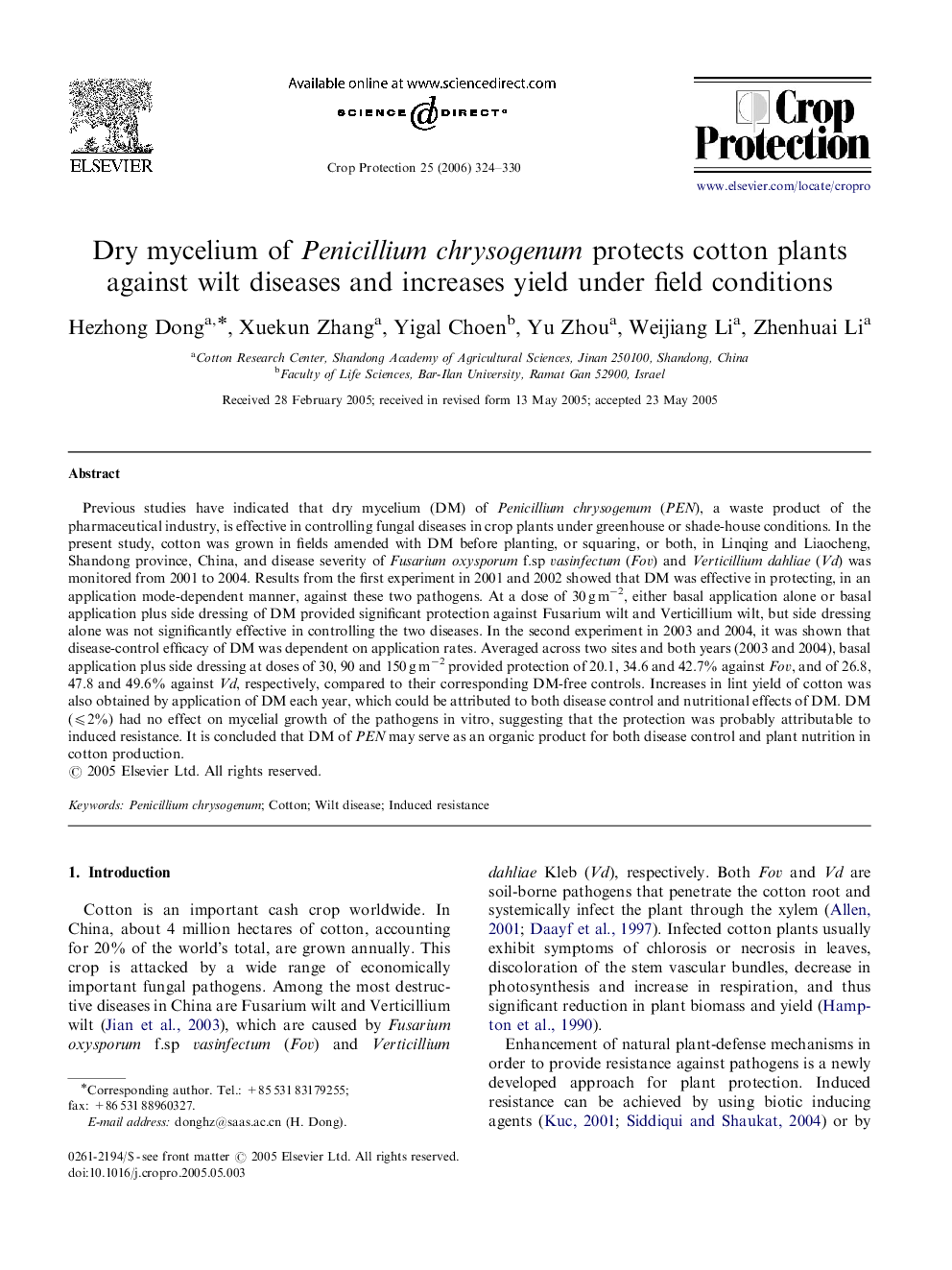| Article ID | Journal | Published Year | Pages | File Type |
|---|---|---|---|---|
| 4507361 | Crop Protection | 2006 | 7 Pages |
Previous studies have indicated that dry mycelium (DM) of Penicillium chrysogenum (PEN), a waste product of the pharmaceutical industry, is effective in controlling fungal diseases in crop plants under greenhouse or shade-house conditions. In the present study, cotton was grown in fields amended with DM before planting, or squaring, or both, in Linqing and Liaocheng, Shandong province, China, and disease severity of Fusarium oxysporum f.sp vasinfectum (Fov) and Verticillium dahliae (Vd) was monitored from 2001 to 2004. Results from the first experiment in 2001 and 2002 showed that DM was effective in protecting, in an application mode-dependent manner, against these two pathogens. At a dose of 30 g m−2, either basal application alone or basal application plus side dressing of DM provided significant protection against Fusarium wilt and Verticillium wilt, but side dressing alone was not significantly effective in controlling the two diseases. In the second experiment in 2003 and 2004, it was shown that disease-control efficacy of DM was dependent on application rates. Averaged across two sites and both years (2003 and 2004), basal application plus side dressing at doses of 30, 90 and 150 g m−2 provided protection of 20.1, 34.6 and 42.7% against Fov, and of 26.8, 47.8 and 49.6% against Vd, respectively, compared to their corresponding DM-free controls. Increases in lint yield of cotton was also obtained by application of DM each year, which could be attributed to both disease control and nutritional effects of DM. DM (⩽2%) had no effect on mycelial growth of the pathogens in vitro, suggesting that the protection was probably attributable to induced resistance. It is concluded that DM of PEN may serve as an organic product for both disease control and plant nutrition in cotton production.
